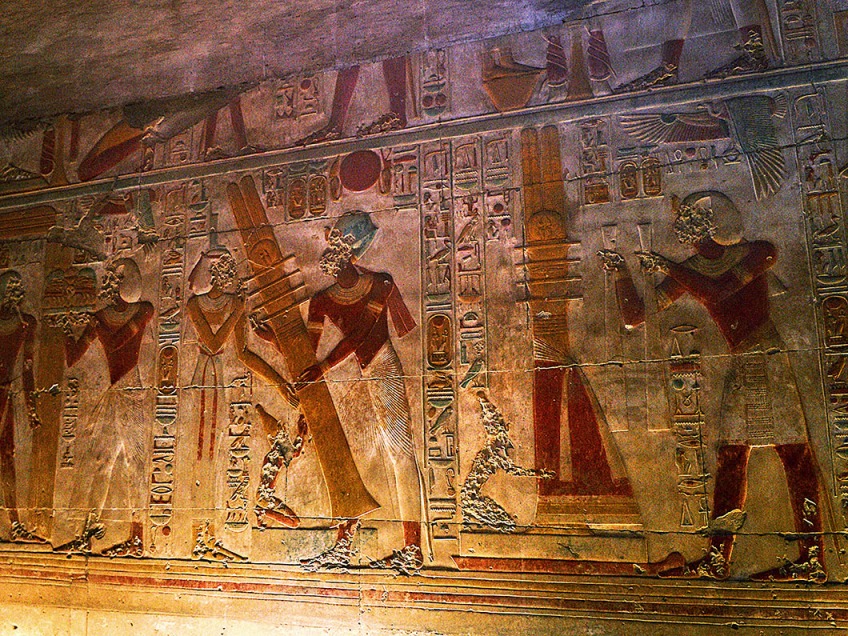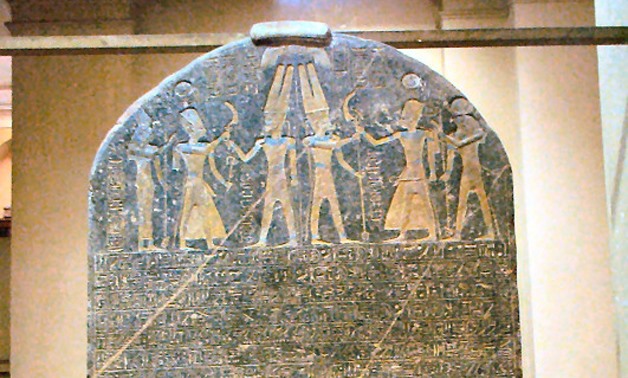
by
Damien F. Mackey
“Merenptah’s involvement with the Osireion raises some questions,
not least, how did he gain access when the brick arch appears
to have been blocked up by Seti?”
Keith Hamilton
The somewhat poorly known pharaoh Merenptah - generally thought to have been the son and successor of Ramses II - needs, it seems, to be filled out with his supposed grandfather, Seti (the father of Ramses II), whom I have multi-identified in e.g. my series:
Seti I and Seti II Merenptah
See especially:
Seti I and Seti II Merenptah. Part Three: Seti I and II Merenptah and Merenptah
Merenptah’s relative obscurity (qua Merenptah) is apparent from the following quotes:
“Greatly overshadowed by his dominant and long-lived father, Merneptah never had a chance to become a famous pharaoh and he was almost unknown for most of his life”.
Note, in the next quote, the sequence: “probably”, “likely”, “presumed”, “possibly”.
“Merneptah was probably the fourth child of Isetnofret I, the second wife of Ramesses II, and he was married to Queen Isetnofret II, his royal wife, who was likely his full sister bearing the name of their mother. It is presumed that Merneptah was also married to Queen Takhat and one of their sons would succeed him as Seti II. They also were the parents of Prince Merenptah and possibly the usurper, Amenmesse, and Queen Twosret, wife of Seti II and later pharaoh in her own right”.
“He left few monuments, but in his conduct of Egypt’s defense and diplomacy he was at least the equal of his father”.
http://www.newadvent.org/cathen/10208b.htm
“His original works are comparatively few and insignificant. His name is constantly found on the monuments of his father …”.
Merenptah is thought to have “decorated” (in some cases, “largely”) monuments of Seti, even though he is considered to have been separated from Seti by the almost seven decades of reign of Ramses II.
“The Osireion is located behind the Abydos temple and may have been intended to be a 'cenotaph' (empty tomb.) The architecture of the Osireion is particularly unusual: a rectangular 'island' surrounded by a channel of water was constructed in the middle of the hall on which large pillars were built. This design may have represented the primeval waters and mound which began all of creation. Although the structure was built by Seti I it was largely decorated by his grandson, Merenptah with scenes from 'The Book of Gates', images of the journey to the underworld, texts relating to astronomy and depictions of gods and goddesses”.
https://www.researchgate.net/profile/Keith_Hamilton4/publication/328225133_The_Osireion_A_Layman%27s_Guide/links/5bbf5cbe299bf1004c5a4617/The-Osireion-A-Laymans-Guide.pdf
“When Murray discovered and excavated the two chambers at the end of the entrance passage, she found them decorated with texts; she states,
“The cartouche of Merenptah appeared in every place where it could be inserted, and we therefore had to consider the possibility of its being his tomb.”24
It seems clear therefore, that a lot of the preliminary laying out of the texts was accomplished by Seti, and that these texts were utilised by Merenptah, who only had to sculpt the walls and replace Seti’s name with his own; though his workers appeared to have missed Seti’s name on two occasions.
There are indications that Ramesses II did likewise in the adjacent temple, when he completed Seti’s work; though there is no evidence that Ramesses did any work on the Osireion.
Merenptah’s involvement with the Osireion raises some questions, not least, how did he gain access when the brick arch appears to have been blocked up by Seti? Frankfort makes no comment on it, other than to question Strabo’s access; he states, Ingress could not be obtained by the arch at the north end of the entrance passage, because we found it still bricked up with Seti’s bricks,..”25
But if this logic is good for Strabo, what about Merenptah? Merenptah was Seti’s grandson and he ruled after his long lived father Ramesses II, who ruled about 66 years: Merenptah would not be so fortunate and his reign is believed to be a more modest 10 years. It would seem therefore, that Merenptah took an unusual interest in the subterranean Osireion some 66 years after Seti bricked up the arch. If Merenptah had used this entrance, might not he have used bricks with his own name on it? So how did he gain access? ….
“Children: Little information about his children but it is believed that his son Seti-Merneptah became Pharaoh Seti II”.





